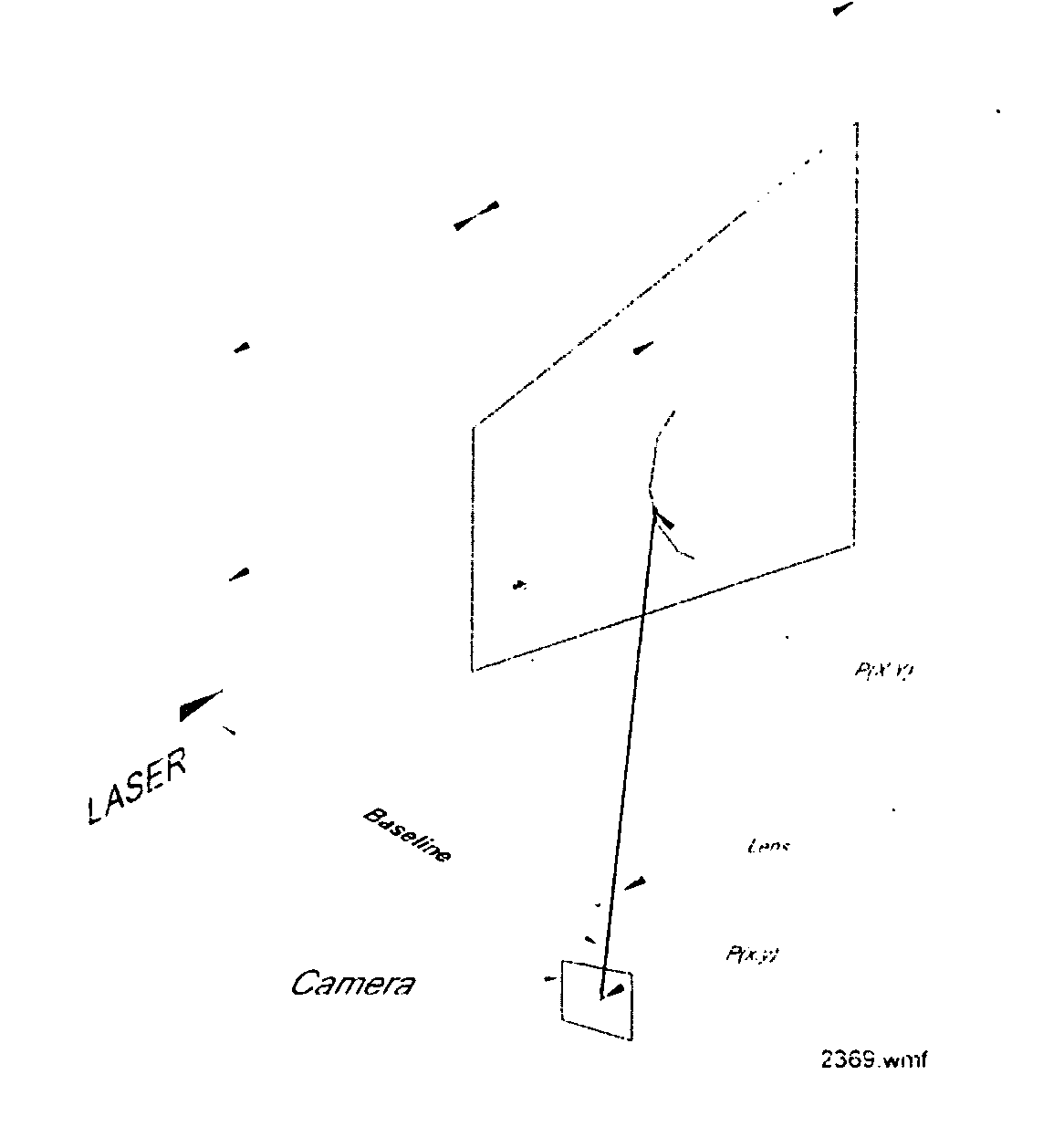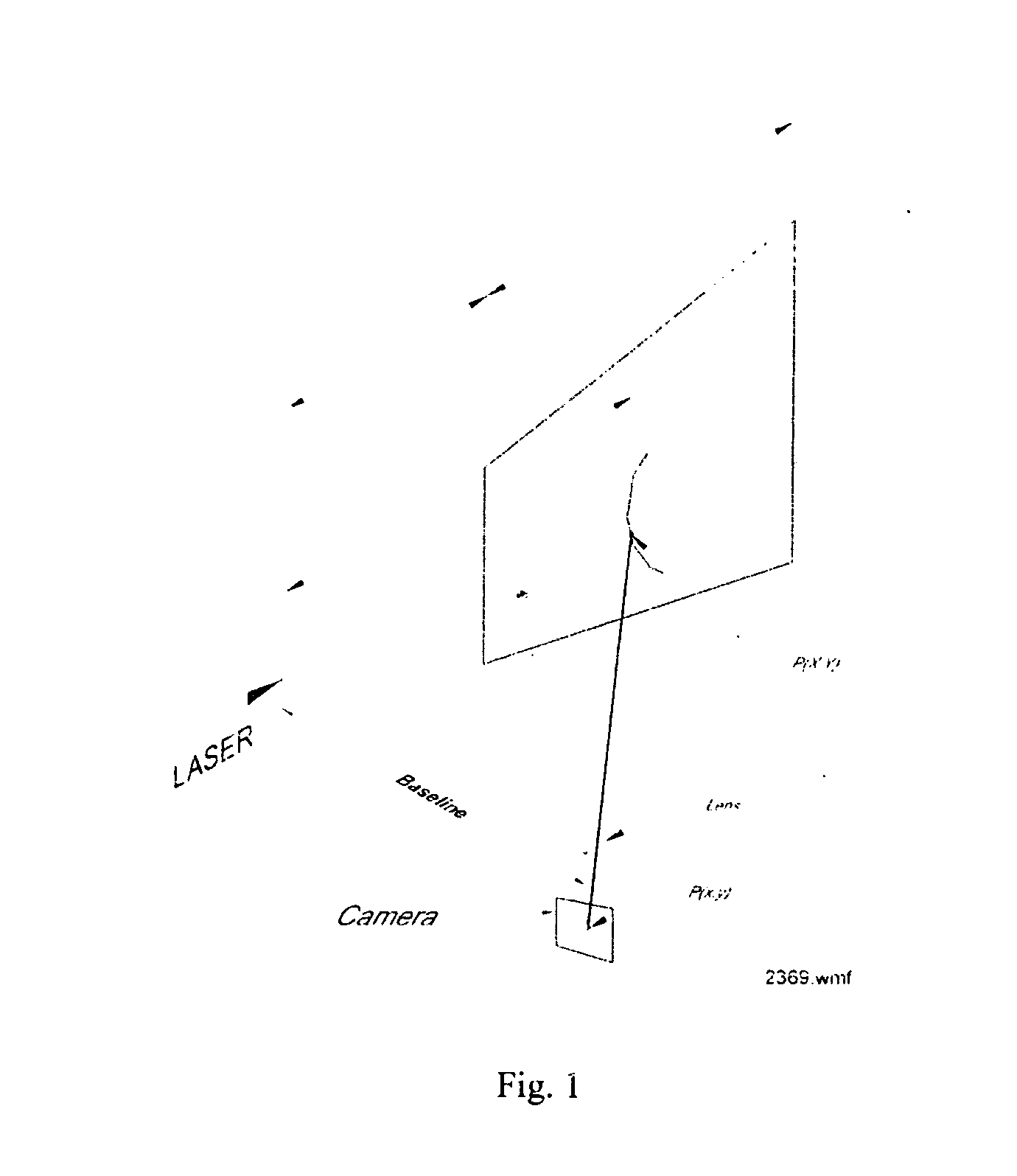Laser triangulation system
- Summary
- Abstract
- Description
- Claims
- Application Information
AI Technical Summary
Benefits of technology
Problems solved by technology
Method used
Image
Examples
Embodiment Construction
Quality Tags
[0066] The concept of quality tags attached to each centroid value provides cues to alert a user that the data may be suspect.
[0067] These tags are determined as follows. [0068] In the calculation phase on each video line, extra data is available to describe the ‘quality’ of the centroid pulse. [0069] In its simplest form, this is just whether the pulse height is within acceptable levels. [0070] Other variations of the simple form can measure quality based on pulse width at the base or half height, total power in the pulse, or the degree of symmetry present in the pulse. [0071] More advanced quality calculations can look at adjacent video lines and provide the degree of correlation to centroids in the ‘y’ direction, or identify more than one candidate centroid on the same line and report these as secondary choices.
[0072] The simple quality tags can be encoded in spare bits in the 16 bit centroid data, but the more advanced values require the addition of an extra byte...
PUM
 Login to View More
Login to View More Abstract
Description
Claims
Application Information
 Login to View More
Login to View More - R&D
- Intellectual Property
- Life Sciences
- Materials
- Tech Scout
- Unparalleled Data Quality
- Higher Quality Content
- 60% Fewer Hallucinations
Browse by: Latest US Patents, China's latest patents, Technical Efficacy Thesaurus, Application Domain, Technology Topic, Popular Technical Reports.
© 2025 PatSnap. All rights reserved.Legal|Privacy policy|Modern Slavery Act Transparency Statement|Sitemap|About US| Contact US: help@patsnap.com



